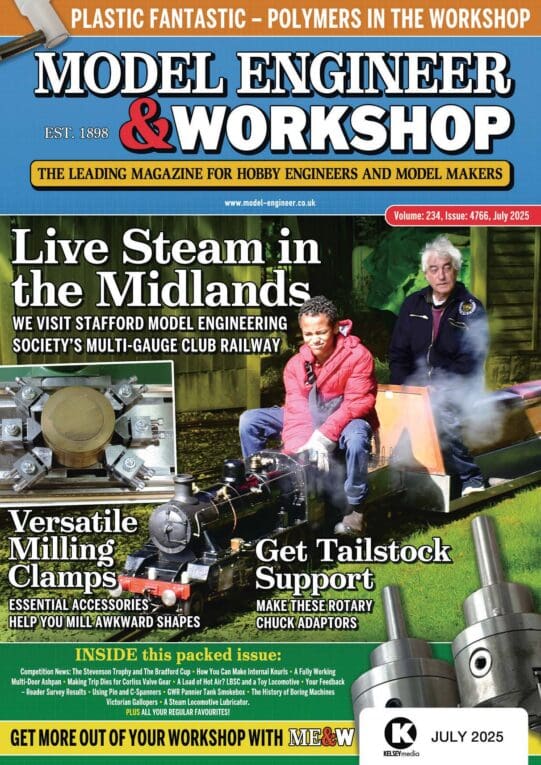As an Engineer and probably many of the members of this forum included I do not like formulas that include hard values with no explanation as to what they represent and why the value is as stated.
First one has to consider when the formula was written and the circumstances of that time. Martin Evans and K.N.Harris were clearly two of the pioneers of the model engineering hobby, books such as Manual of model steam locomotive construction (1960) and Model boilers & boiler making by K.N.Harris (1967) are still referenced today.
The famous UTS formula P = D x F x WP / TS x T x 2
Where:
P = plate thickness in inches
D = boiler diameter in inches
F = the safety factor. (this is between 6 and 10 but usually a factor of 8 is used)
WP = the working pressure in lb/in²
TS = the tensile strength of copper (a suggested figure is 25,000 lb/in²)
T = An allowance of 0.8 for pressures between 60-100 lb/in² and 0.7 for pressures from 110 to 150 lb/in²)
Included ‘F’ a safety factor, but we have a safety factor of 2xWP so why do we need another safety factor of ‘8’?
Back to the 60’s and early 70’s when Evens and Harris were experimenting with miniature boilers and writing their books, the available material at that time was still limited, copper piping was just starting to replace lead piping and there was a shortage of copper, also the machinery did not have the accuracy we expect from modern machinery and CNC was still being developed by MIT.
So, the UTS formula had to make an allowance for inconsistent plate thickness, cylindrical tubes not being true cylinders, handmade endplates with varying gap tolerances and plate thickness, quality and availability of silver solder, etc. Therefore, some compensation factor had to be built into the formula to account for these variables.
It is unfortunate that these compensation factors were lumped together and called ‘safety factors’, I now understand why MEinThailand objected to calling the ‘F’ variable a safety factor, in reality it is a compensating factor for design issues in the materials and construction that were unavoidable at the time the formula was first published.
So where does that leave the YP method?
First, we must consider do the same limitations and factors still apply to modern model boiler construction. I personally believe some do and some do not.
Most modern workshop equipment has accuracies and repeatability significantly better than was available in the late 60’s early 70’s, with CNC retrofitting of manual equipment the accuracy and repeatability is constantly increasing. However some things like manually working copper to form an end plate has not changed much in the last 65 years.
But what about moving forward, tig welding was not considered to be something a hobby workshop would have 60 years ago, what about 3D metal printing and laser cutting, tools and technologies that were only talked about in academic circles are becoming available to the hobby workshop.
Some have mentioned FEA is the way forward, the reality is most FEA models are still very simplistic, yes there are better models and more advanced analytics, but these are generally out of the reach of the hobby engineer some costing thousands of dollars. I hope professor Beach or one of the other professors at MIT can help move that forward.
Should we cling to a formula that was designed to give a reasonable assurance that a copper boiler built with all the limitations and artifacts of the 60’s /70’s would be ok, or do we move the work practices and formulas forward as the technology advances and materials are produced with higher quality and tighter quality controls.
I will leave this question with you whilst you think about the future of our hobby.
noel shelley.




